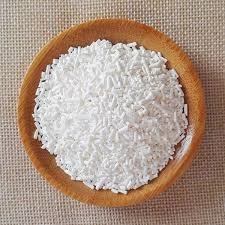
food additive 450
Understanding Food Additive E450 Properties, Uses, and Safety
Food additives play a crucial role in the food industry, enhancing flavors, improving texture, and increasing shelf life. Among these additives, E450, also known as diphosphates or sodium diphosphate, is widely used in various food products. This article explores the properties, uses, and safety considerations surrounding food additive E450.
What is E450?
E450 refers to a group of phosphates—specifically, diphosphates and polyphosphates. These compounds are created by chemically bonding two or more phosphate groups together. E450 is recognized for its ability to function as a stabilizer, emulsifier, and thickening agent, making it an essential additive in numerous food applications. It is particularly valued for its hygroscopic properties, meaning it can absorb moisture from the environment, which helps maintain product texture and consistency.
Common Uses of E450
E450 is extensively used in a variety of food products. Some of the most common applications include
1. Processed Meats E450 is often added to processed meats, such as sausages and ham, to improve texture and moisture retention. It helps bind water to the meat, reducing the risk of drying out during cooking and storage.
2. Baked Goods In the baking industry, E450 serves as a leavening agent. It reacts with other ingredients to produce carbon dioxide, which helps baked goods rise and achieve a light, airy texture.
food additive 450

3. Cheese Products E450 is commonly used in processed cheese products to enhance meltability and stability. It helps create a smooth texture and prevents the formation of oil and water layers during heating.
4. Dairy Products In various dairy products, such as creamers and ice creams, E450 is utilized to improve viscosity and prevent crystallization, ensuring a consistent texture throughout the product's shelf life.
5. Frozen Foods E450 can be found in frozen foods, where it helps maintain quality and prevents ice crystal formation, thereby preserving the flavor and texture after thawing.
Safety and Regulatory Status
E450 is considered safe for consumption within the limits set by food safety authorities. Organizations such as the European Food Safety Authority (EFSA) and the United States Food and Drug Administration (FDA) have reviewed the available scientific data and established acceptable daily intake levels. When used as directed, E450 does not pose significant health risks to the general population.
However, it is essential to recognize that excessive consumption of phosphate additives, including E450, could lead to health concerns, particularly in individuals with kidney issues or those at risk of cardiovascular diseases. High phosphate levels in the bloodstream can lead to imbalances in calcium and bone health, prompting some health experts to advise moderation.
Conclusion
Food additive E450 plays a pivotal role in the food industry, enhancing the quality and shelf-life of a wide array of products. Its applications in processed meats, baked goods, cheese, dairy, and frozen foods illustrate its versatility and importance. While E450 is deemed safe for consumption, it is crucial for consumers to remain informed about food additives and their potential impacts on health, particularly for those who may be sensitive to phosphate levels. As with all additives, moderation is key, ensuring that the enjoyment of our favorite foods does not come at the expense of our health.
-
Understanding Synthetic Rubber OptionsNewsApr.27,2025
-
Trichloroisocyanuric Acid: Essential for Clean and Safe WaterNewsApr.27,2025
-
Sodium Dichloroisocyanurate: Key to Safe Water TreatmentNewsApr.27,2025
-
Sodium Acid Pyrophosphate: Essential in Modern Food ProcessingNewsApr.27,2025
-
Essential Water Treatment ChemicalsNewsApr.27,2025
-
Denatured Alcohol and Its Industrial UsesNewsApr.27,2025
-
The Versatile Uses of Sodium BicarbonateNewsApr.24,2025
Hebei Tenger Chemical Technology Co., Ltd. focuses on the chemical industry and is committed to the export service of chemical raw materials.
-

view more DiethanolisopropanolamineIn the ever-growing field of chemical solutions, diethanolisopropanolamine (DEIPA) stands out as a versatile and important compound. Due to its unique chemical structure and properties, DEIPA is of interest to various industries including construction, personal care, and agriculture. -

view more TriisopropanolamineTriisopropanolamine (TIPA) alkanol amine substance, is a kind of alcohol amine compound with amino and alcohol hydroxyl, and because of its molecules contains both amino and hydroxyl. -

view more Tetramethyl Thiuram DisulfideTetramethyl thiuram disulfide, also known as TMTD, is a white to light-yellow powder with a distinct sulfur-like odor. It is soluble in organic solvents such as benzene, acetone, and ethyl acetate, making it highly versatile for use in different formulations. TMTD is known for its excellent vulcanization acceleration properties, which makes it a key ingredient in the production of rubber products. Additionally, it acts as an effective fungicide and bactericide, making it valuable in agricultural applications. Its high purity and stability ensure consistent performance, making it a preferred choice for manufacturers across various industries.











